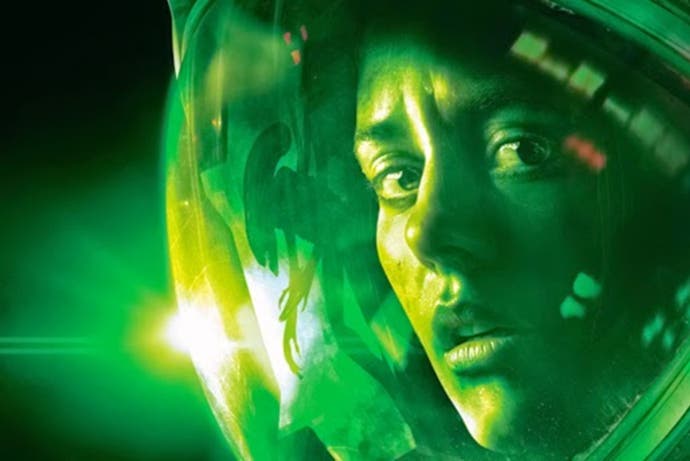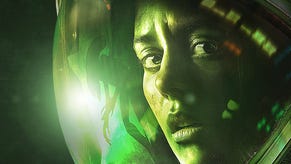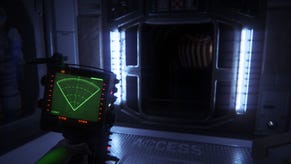Alien: Isolation review
I think we're alone now.
I was nine years old when I first saw Ridley Scott's Alien. A schoolfriend had taped it off the telly, and one summer holiday afternoon we all gathered in his living room to watch this forbidden fruit, brought to us by the magic of a Memorex E-180.
It was the first proper horror movie I'd seen, outside of cheap black-and-white 1950s monster movies, and quite frankly it scared the piss out of me. Almost literally. I never even made it to the end. Around the time the creature's pneumatic jaw slammed into the skull of Yaphet Kotto's Parker and you totally saw bits of his brain, I caved in, faked a need to be somewhere else and fled into the suburban sunshine to walk off my jitters.
I've been chasing that initial high ever since - and from the moment it opens with a distorted, crackling rendition of the 20th Century Fox fanfare that looks like it could have come from the very same VHS tape, Creative Assembly's Alien: Isolation is the closest I've come to recapturing that same mix of cloying dread and intense vulnerability.
This is a game of details, where thick atmosphere adds muscle to simple gameplay ideas, and where the creaking, moribund space station Sevastopol, all ruined walkways and steam-hissing passages, is arguably a more important character than any of the slightly stiff supporting players you'll encounter along the way.
You're playing as Amanda Ripley, daughter of Sigourney Weaver's iconic big-screen heroine. It's a decision that made me roll my eyes at first - too many sci-fi franchises end up restricting their universes to ever smaller iterations, rather than let go of established characters - but the way it's handled here makes perfect sense. Set 15 years after the Nostromo was lost, Amanda is now a young adult, a brash engineer whose abandonment issues have left her with impregnable emotional defences. When word comes in that a salvage vessel has found the flight recorder from the Nostromo, she's offered the chance to join the crew, as an engineer but also as a daughter looking for closure.

What she finds, of course, is disaster. Much like Scott's movie, this is a slow burn of a game, keeping its monster out of the picture for a long time. You see evidence of its gory handiwork, but mostly the opening of the game is spent immersing you in the downfall of Sevastopol, already well under way before a xenomorph found its way on board.
This is where Creative Assembly shows that it really understands the world it has inherited. Just as the 1979 movie pulsed with a bitter undercurrent of class resentment, so Isolation presents us with a corporate future that feels weary, exhausted and broken in ways that are all too familiar.
The Sevastopol, you see, is owned by Seegson, a technology company that is basically the Lidl to Weyland Yutani's Waitrose. Its top products are synthetic workers, but far from looking like Ian Holm or Lance Henriksen, the "Working Joes" are blank-faced creeps with white rubber skin and hollow voices. The Sevastopol is similarly cheap and shabby. What was supposed to be a shining beacon of an outpost turns out to be a dead end, about to be shut down, its bars, stores and living quarters abandoned as galactic austerity bites. Much of the game's pathos comes from the log entries left by ordinary inhabitants, crushed by economics long before they were dragged away by the Alien.
It's a dead environment, but one that is alive with detail. Real thought has gone into the functionality of the station, the location of the different sectors and how they relate to one another. You get to see the ruins of every aspect of life on a frontier station, written so deftly into the scenery that the decision to spell out Sevastopol's desperation in gaudy fake-sounding graffiti slogans feels like overkill.
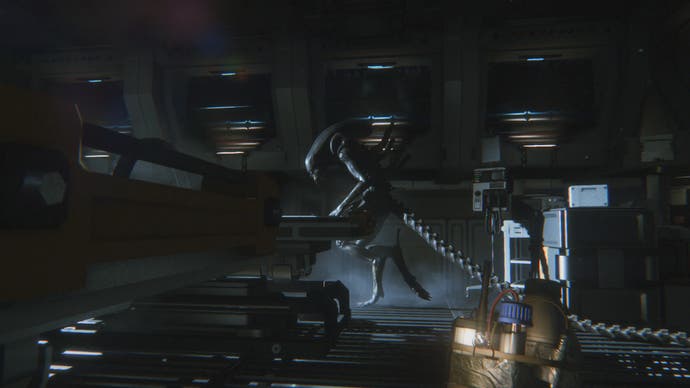
This is a place that feels lived in, and the visuals rise to the challenge brilliantly. The lighting is superb, and the moments when a rare window offers a view of the vacuum outside are breathtaking. This is a game during which you'll spend a lot of time frozen in fear, hiding from certain death - but you're just as likely to find yourself stopped in your tracks to admire the scenery.
As gorgeous as it is, there's nothing you'll do here that hasn't been done before. You'll trigger audio diaries, hack locks, find keycards - it's standard first-person exploration stuff, albeit in an unusually compelling environment. It's when the Alien shows up that the game finds its real pulse.
The decision to make the Alien a free-roaming AI creation is a stroke of genius. Though there are scripted encounters, for the most part you'll have no warning when the beast drops from a vent and starts to prowl. It won't follow fixed patterns and it won't cut you some slack because you've moved past some invisible trigger point. It will kill you as you creep towards a save point, it will kill you while you access a vital computer or push the button needed to move the story forwards. It is, quite frankly, a bastard.
Evasion is your only real option, and you'll swear that the thing is taunting you as it pads slowly past the locker where you're hiding, pauses, then comes back for another look. Sometimes you'll wait for minutes at a time for it to move far enough away - its distance measured in the familiar retro beeps of the motion tracker. Even then, it doesn't pay to get comfortable. It can vanish into the vents above, only to come back moments later. All the established rules of what is fair in gaming are thrown out.
It's utterly invigorating - some of my most tense and memorable horror gaming moments ever came while playing this game - but it can also be painfully infuriating. You'll be killed seemingly at random with no warning. You'll grit your teeth as you reload over and over - the game only keeps your two most recent saves, so you can't skip back too far - tackling long sections multiple times until you finally creep through, as much by luck as judgment.

Your other tools are an assortment of weapons: a pistol, a shotgun, a flamethrower and a bolt gun, mostly used for dealing with the station's other hazards (of which more later). You'll get more use out of some craftable devices that can buy you a few precious seconds. Noisemakers will lure the Alien - and others - to wherever you throw or plant them. Pipe bombs, molotovs and EMP mines are all self-explanatory.
The crafting system, like the rest of the game's mechanics, is simple to the point of being shallow. You'll amass bits and bobs from drawers, cupboards and other typical loot spots, and then when you have enough of these - plus a catch-all "junk" currency - you can build whatever you need. Blueprints will upgrade the result, but I never spotted much of a difference.
What these items do offer is a much needed modicum of strategy. The Alien is single-minded enough that your options are fairly limited. When dealing with the handful of aggressive and paranoid station survivors, over-zealous security guards and malfunctioning Working Joe androids, you can be a little more creative, hacking systems and laying traps to take them down.
These foes keep you busy during the times when the creature isn't around, and it's a job they do well enough. The game is wise not to lean on its titular monster too heavily, but it also becomes drastically less interesting whenever it vacates the stage. The Alien encounters are so alive, so terrifying, that everything else can't help but feel a little deflated by comparison. There's a lengthy section, about three quarters of the way through, when the emphasis shifts hard onto the Working Joes as your primary enemy, and it's no surprise that this is the worst part of the game: a joyless slog against a one-dimensional enemy that threatens to tip the whole experience into typical action game mode, all guns, fire and bombs.
Isolation never quite falls into that trap, but it certainly wobbles along the way as it tries to keep coming up with things to fill in the time between Alien encounters. There's an elongated flashback that feels jarring - taking you out of Ripley and making you play as another character, solely so you can get a change of scenery. There's very little gameplay in this section and it proves to be a slow and rather indigestible lump of unnecessary exposition to drop in the middle of the game.
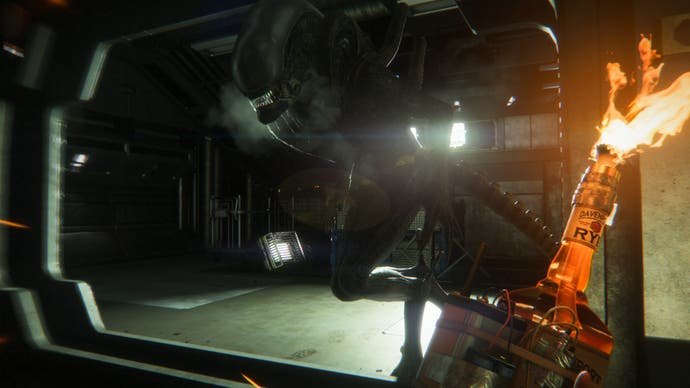
It always feels weird to complain about a game being too long, but towards the end it definitely feels like Isolation is outstaying its welcome. There are multiple points where it feels like the story could be coming to an end, but it keeps on going. The Alien bits still thrill, but the constant backtracking to reboot systems, activate machines and find characters starts to grow thin. By the time the credits roll - after a slightly disappointing QTE-lite finale - they feel overdue.
The game's elongated feel isn't helped by the generally bland supporting characters, who exist mostly to nudge Ripley further along the story before providing predictable set-piece deaths. The voice acting is variable and the character models and animation don't match up to the high visual standard set elsewhere. They're not bad, but they fail to register as fellow humans whose sacrifices and fears mean anything to the player.
Unlike the creature it so lavishly recreates, Alien: Isolation isn't quite a perfect specimen - but the things it does get right, it gets so brilliantly right that it will give you some of your best gaming memories of the year. There are a few too many repetitive lows in between those dizzying highs, and some teeth-grinding moments of unfair instant death, but as maddening as they are in the moment, those will be forgotten in time.
A shorter, sharper campaign would condense the high points more potently, and some better characterisation would make the plot twists hit harder. But if you're looking for a game that really sinks its teeth into what makes this iconic movie monster endure, look no further.
